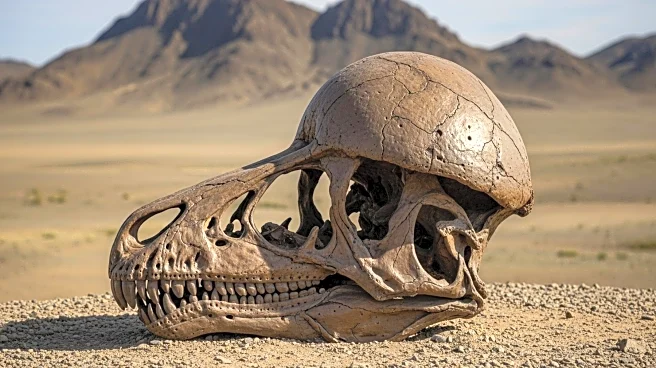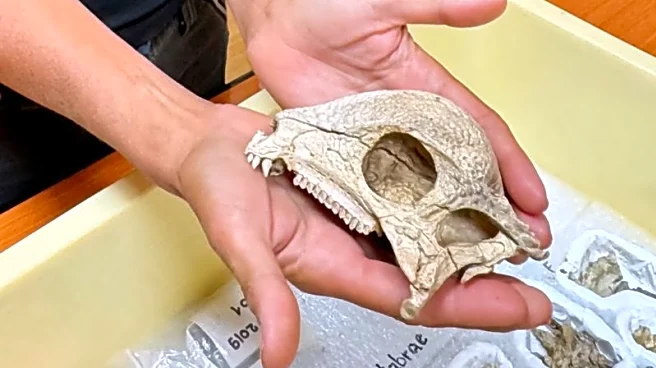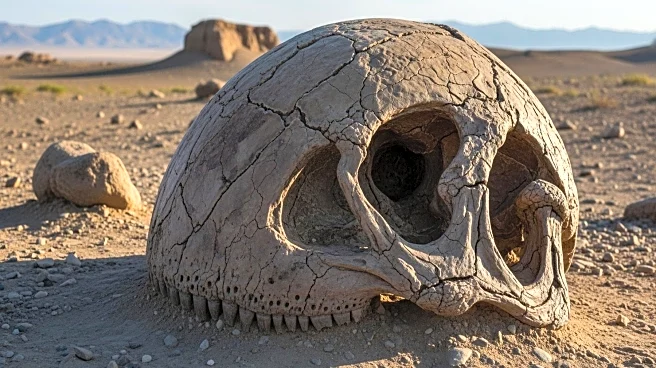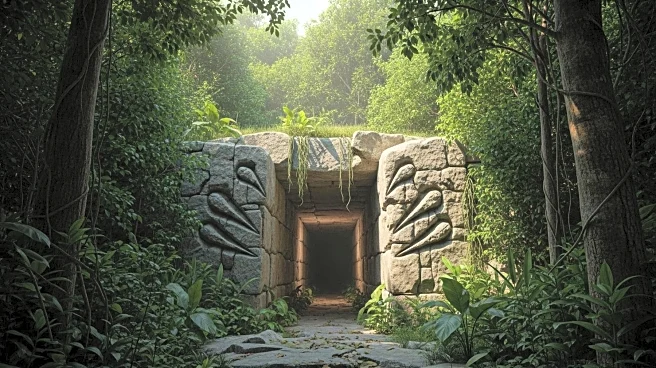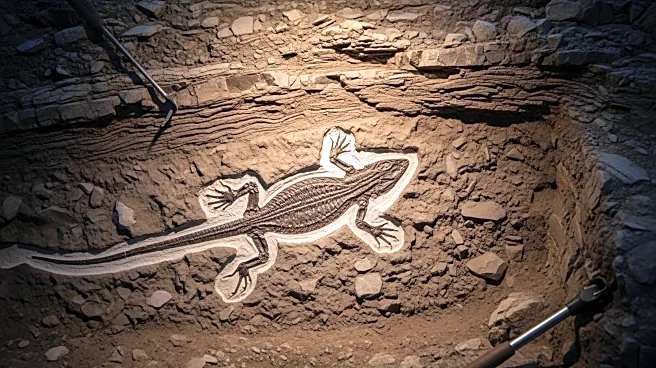What's Happening?
A team of paleontologists has uncovered the oldest known dome-headed dinosaur, Zavacephale rinpoche, in the Gobi Desert of Mongolia. This discovery, dating back approximately 108 million years, reveals a new species within the pachycephalosaurs, a group of dinosaurs known for their distinctive skull protrusions. The fossil, which includes a nearly complete skull and limb bones, was found by researchers from the North Carolina Museum of Natural Sciences. The dome-shaped skull, covered in dimples, suggests the presence of additional features that may have been used for defense or social displays. The fossil also contained stomach stones, indicating its dietary habits. This specimen predates other known pachycephalosaurs by about 15 million years, providing new insights into the evolution of these dinosaurs.
Why It's Important?
The discovery of Zavacephale rinpoche is significant as it pushes back the timeline for the evolution of dome-headed dinosaurs by approximately 14 million years. This finding enhances the understanding of dinosaur evolution and diversity during the early Cretaceous period. The well-preserved state of the fossil, including its skull and limb bones, offers valuable information about the physical characteristics and potential behaviors of pachycephalosaurs. This discovery not only contributes to the scientific knowledge of dinosaur evolution but also highlights the Gobi Desert as a critical site for paleontological research, potentially leading to further discoveries in the region.
What's Next?
The research team plans to conduct further studies on the fossil to explore the growth patterns and developmental stages of Zavacephale rinpoche. Additional excavations in the Gobi Desert may uncover more specimens, providing a broader understanding of the diversity and distribution of pachycephalosaurs. The findings could also prompt a reevaluation of the evolutionary timeline of other dinosaur species, as well as their ecological interactions during the Cretaceous period.

